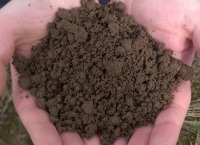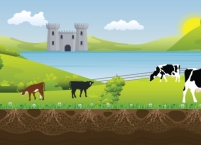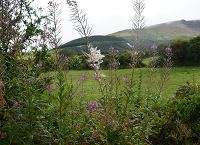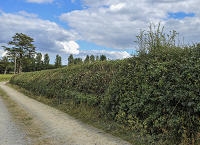Environment

Soil Carbon sequestration
Soil Carbon sequestration Soil carbon sequestration is an important mechanism that removes carbon dioxide from the air and stores it in the soil. This improves a number of aspects of soil health. Researcher Karl Richards outlines why soil carbon sequestration is important. Carbon stored in soils is often called soil organic carbon […]
22 September 2022

Reducing fertiliser N use to reduce GHG emissions and save costs
Reducing fertiliser N use to reduce GHG emissions and save costs Mark Plunkett and Tom O’Dwyer tell us how Teagasc can help you to identify opportunities to reduce GHG emissions on your farm. Keith Fahy, Teagasc Advisor caught up with Siobhan Kavanagh, Signpost Programme Communications and Engagement Specialist, Teagasc to get an […]
20 September 2022

Farming with the environment through ACRES
Farming with the environment through ACRES Catherine Keena, Teagasc Countryside Management Specialist, tells us that helping the environment alongside food production on farms is the theme on the Teagasc environment stands at the Ploughing Championships this year, and ACRES can help. Keith Fahy, Teagasc Advisor caught up with Catherine Keena, Teagasc Countryside […]
20 September 2022

How satellite images from space are used to monitor our soil
How satellite images from space are used to monitor our soil Rumia Basu, PhD student at Teagasc, tells us about the connection between soil, rain and the climate is especially important for a grass-based economy like Ireland’s When I first landed in Dublin, three years ago, I was greeted with rain, a […]
19 September 2022

Treating slurry to reduce emissions
Treating slurry to reduce emissions Dominika Krol, Maxwell Owusu-Twum and George Gleasure Teagasc Johnstown Castle and Shaun Connolly, NUI Galway bring us details on their research into Acidification and Amendments for Slurry Treatment and the Impacts on Emissions. This was presented at the recent Farming for a Better Future Open Day In […]
17 September 2022

Lowering the Carbon Footprint of Pasture-based Milk Production
Lowering the Carbon Footprint of Pasture-based Milk Production Dairy farms account for approximately 20% of agricultural land use & approximately 15% of national greenhouse gas emissions. James Humphreys, Daniel Barrett, Marion Sorley & Owen Cashman of Teagasc, Moorepark summarise their research on Lowering the Carbon Footprint of Pasture-based Milk Production Summary Dairy […]
11 September 2022

Farm Carbon – Hedgerow Management for Carbon & Biodiversity
Farm Carbon – Hedgerow Management for Carbon & Biodiversity Lilian O’Sullivan, Gary Lanigan, Daire Ó hUallacháin, Shiva RahimiTana, Mark Ward, Ian Kavanagh, all Teagasc Researchers at Johnstown Castle, together with Kevin Black, Forest Environment Research and Services (FERS), Navan, Co. Meath, bring us details of their Farm Carbon project on Hedgerows here […]
10 September 2022

Growing Wild – willowherb and water mint
Growing Wild – willowherb and water mint Catherine Keena, Teagasc Countryside Management Specialist takes a closer look at some of our native Irish biodiversity to look out for in the countryside. Here she shares some interesting facts of nature about willowherb and water mint Willowherb Look out for willowherbs with their four […]
10 September 2022

Multi-species Mixes Increase Yield with Less Fertiliser, and Increase Drought Resilience
0 Multi-species Mixes Increase Yield with Less Fertiliser, and Increase Drought Resilience At Farming for a Better Future Open Day John Finn and Guylain Grange, Researchers at Teagasc, Johnstown Castle and Caroline Brophy, Trinity College Dublin summarised the ongoing research at Teagasc Johnstown Castle into multi-species grassland mixtures. Find out the promising results […]
3 September 2022

Best Practice hedge cutting for our two hedge types
0 Best Practice hedge cutting for our two hedge types With the opening of the hedge cutting season on 1 September, best practice hedge cutting is more important than ever because of the role of hedges in biodiversity and carbon and the need to improve their condition. Catherine Keena, Teagasc Countryside Management Specialist […]
2 September 2022
